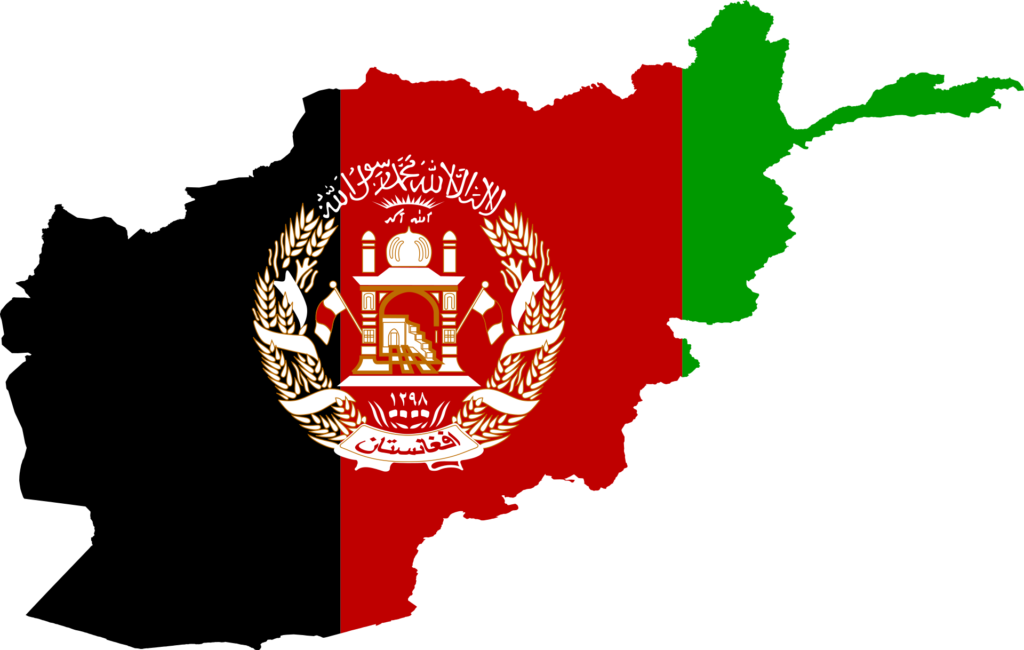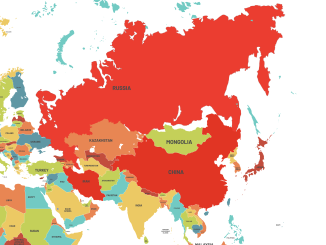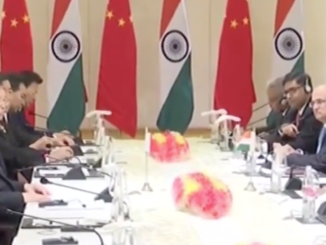
The peaceful future of Afghanistan is subject to the regional environment, with Pakistan playing a dominant role. Likewise, an unstable Afghanistan does not serve the growing interest of Pakistan in Afghanistan and Central Asia. However, the increasing presence of other regional actors such as India, Iran, and the Central Asian States are proving to be troublesome for Pakistan.
First, a brief look at Pakistan’s foreign policy towards Afghanistan. The salient features are strengthening people-to-people connections, improving trade and transits ties (Pak-Afghan bilateral trade is highest and reached around US$ 1.437 million), undertaking joint connectivity, promoting economic integration, working together to bring peace in Afghanistan, non-interference in domestic affairs of each other and not allowing the respective territories to be used against each other. Hence, fostering healthy relations with Afghanistan coincides with Pakistan’s vision of a ‘peaceful neighborhood’.
Yet, Pakistan is unable to independently construct its foreign policy because of the interest of regional actors in Afghanistan due to its strategic location putting it at the crossroads of the Middle East, Central Asia, and South Asia and their significant influence over Pakistan. The first regional actor is India, Its’s main objectives in Afghanistan are to promote a stable democratic order, counter Pakistani influence, and prevent Islamabad-backed militants from using Afghanistan as a platform for terrorism that could threaten Indian interest such as the presence of Lashkar-e-Tayyiba (LeT), which according to India, carried out the Mumbai attack in 2008 and is responsible for terrorist activities in India. Indian government sees stable and sovereign Afghanistan as an important factor against militancy in Indian occupied Kashmir. Hence, they want to preserve the constitutional framework of Afghanistan for their political and security objectives.
India is using soft power diplomacy to further its influence in Afghanistan by giving economic investment worth 3 billion US dollars. It has also built Afghan-India Friendship Dam in the western province of Herat and is investing in health, education, and water. Moreover, India is training Afghan civil servants, soldiers, and law enforcement personnel and gives one thousand scholarships to Afghanistan students yearly. In 2011, it signed a Strategic Partnership Agreement with Afghanistan to “assist, as mutually determined, in training, equipping and capacity building programs for Afghan National Security Forces’.
India’s soft diplomacy tactics are proving to cause strains in Pakistan’s relationship with Afghanistan. Ashraf Ghani, President of Afghanistan, first fostered good relations with Pakistan in the hope to pressurize the Taliban to join Afghan-Taliban peace talks. But India was against this as it sees this as giving Taliban and Pakistan outsized roles during the peace process. As a result, India used its significant diplomatic influence and tilted Afghanistan towards itself by convincing Ashraf Ghani that Pakistan is not curbing its militant groups; it fears the growing presence of India and that it might be encircled by India from all sides, which may pose a threat to the national security of Pakistan. Pakistan is becoming skeptical of Indian presence in Afghanistan as it blames RAW for terrorist activities in Baluchistan.
However, the Afghan peace talk turned out to be the turning point in Pakistan-Afghanistan relations. Pakistan holds immense importance for making this talk a success, Ghani tilted his foreign policy in Pakistan’s favor and improved relations with Islamabad in the hope that the Pakistani military establishment will pressurize the Taliban to join peace talks with the Afghan government. However, India asserted diplomatic pressure and tilted Ghani towards India by creating the narrative that Islamabad is not doing enough to curb militant hubs even though Pakistan did.
After that, Pakistan realized that it has to change its foreign policy approach towards Afghanistan and released former Taliban deputy leader Mullah Baradar Akhund after nearly nine years of detention. This shows that Pakistan was moving forward to improve relations with Afghanistan. Moreover, the Afghan peace talks and Doha agreement came in favour of Pakistan as India refuses to have an open dialogue with the Taliban and views the Afghan peace talks and Doha agreement as a victory for Pakistan. Furthermore, with the US withdrawing from Afghanistan, India fears that it might be replaced by Pakistan. Therefore, Pakistan managed to deter the influence of India in Afghanistan by using soft diplomacy.
The next country in the discussion is Iran. Iran seeks to maximize its control through a dual strategy that will prevent Afghanistan from turning into an anti-Shia stronghold and reduce the presence of the US. Iran shares a culture and an ethnic tie with the Hazaras, who are a Shia minority in Afghanistan. However, Iran knows that internal power-sharing between different ethnic groups in Afghanistan is in its interest in keeping Afghanistan de-stabilized, thus preventing the Sunni majority government from dominating it.
Yet, it supports different Pashtun leaders, such as Gulbuddin Hekmatyar of Hezbi-Islami. The connection to key Pashtun figures should be seen in the light of Iran’s geopolitical ambition of being a key regional player that can balance other regional actors, especially Pakistan, to mitigate security threats against Iran. Iran is using Afghanistan to balance Pakistan in the region. It is also supporting a faction of the Afghan Taliban movement, Mashhad Shura. One of the main underlying reasons for the support is to use the Taliban movement to destroy dams in the western part of Afghanistan to ensure continuous water flow to Iran as water resources in the border region are very limited. Similarly, it is using the Afghan Taliban movement as a card against Pakistan. From Iran’s perspective, Taliban power is closely related to Pakistan and key to Pakistan’s security interests. Therefore, to stay relevant in regional affairs and to balance out anti-Shia sentiments in the Taliban movement, Iran is supporting the Afghan Taliban movement.
From the economic and development perspective of Pakistan, the instability of Afghanistan is not favourable. Pakistan is trying to ensure peace and stability in Afghanistan for potential projects via CPEC or the Central Asian states. However, Iran’s ambitions in Afghanistan are creating a hurdle for Pakistan. Since Iran seeks to benefit from instability in Afghanistan, whether it comes to water resources, Shia sentiments, or their Central Asian ambitions. Iran has direct access to Central Asian markets through its border with Turkmenistan and Pakistan’s most direct route goes through Afghanistan. A stable Afghanistan would compete with Iran for the outflow of oil through Pakistan.
Pakistan managed to counter Iran’s ambitions in Afghanistan and the region through the Afghan peace talks. During the rising tensions between Iran and the US, especially after the killing of Soleimani, Pakistan volunteered to act as a mediator to resolve their conflict. It places Pakistan in a dominant role considering its relevancy in talks with the Taliban; even the US acknowledged the importance of Pakistan’s position in this scenario.
Moving forward, the Central Asian states also have a significant influence in Afghanistan which can change regional dynamics. The Central Asian states are planning to re-draw their borders in the region and are opening doors to Afghanistan to include it in Central Asia as well. The main objectives of the Central Asian states in Afghanistan are stability and prosperity, to prevent the Taliban from rising to power and disturbing regional security due to the rise in radicalism which will have drastic implications for the Central Asian states when they are trying to uplift their economic conditions and acquire a dominant role in international politics.
Moreover, Central Asia and Afghanistan share a cultural and ethnic tie with the Uzbek population in Afghanistan which will facilitate the smooth integration of Afghanistan in Central Asia. It will offer Afghanistan a northern route to Central Asia, across the Caspian Sea to Azerbaijan, and on to Europe. If this ends up being a success, Pakistan will have to upgrade its infrastructure to take part in the export of Afghanistan’s abundant minerals, estimated to be worth around $3 trillion.
However, this means that Pakistan will lose its upper hand in Afghanistan, and this will enable Kabul to be more assertive in its dealings with Pakistan’s sanctuaries for the Taliban and Haqqani Network. Pakistan will lose an edge over foreign policymaking in Afghanistan. However, the financial conditions of Pakistan have put it in a sensitive position where it needs the Central Asian markets, which can only be possible through a peaceful Afghanistan, and Central Asia will play a huge role in creating that peace. Even though the increased presence of the Central Asian states in Afghanistan will lead to the downfall of Pakistan’s influence in Afghanistan but it also means that the route to Central Asia may open and will create new economic opportunities for Pakistan in the future.
In conclusion, it can be stated that Pakistan’s foreign policy in Afghanistan is influenced by various regional actors and their ambitions in Afghanistan and the region. However, Pakistan has managed to effectively deal with different scenarios through soft diplomacy measures.
![]()




Wow. Comprehensive